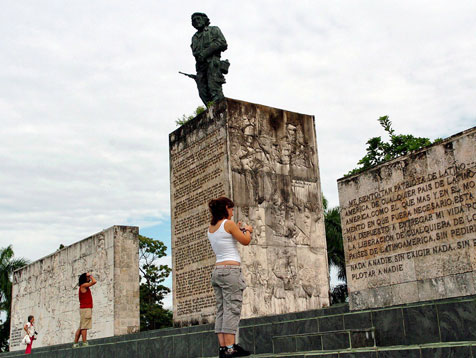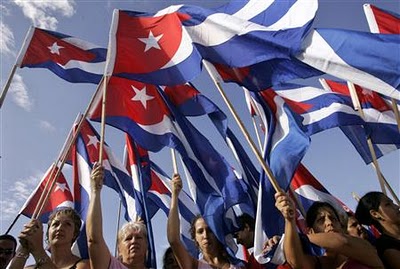31 October 2010
Sierra Maestra Walk | Blog from Cuba: Che Guevara’s final resting place
Tuesday 26th October
ON OUR final day in Santa Clara we had the privilege of visiting the mausoleum which marks the final resting place of Che Guevara and the rebels who were slain with him in Bolivia.
On the surface the mausoleum is a towering tribute to Che with a huge statue of him with his rifle and in army fatigues. Part of the monument states Che's belief in the importance of voluntary work to build character – a belief which he espoused daily.
The actual crypt lies underground and is a place of peaceful calm. The atmosphere is cool and reverend and an eternal flame burns
We proceeded to the museum that houses many of Che's personal items, including some of the combat fatigues he wore during the campaign.
We met at the base of the plinth of the statue to Che to make a presentation to the director of the complex of several gifts and then a special presentation of a stone from each of the graves of the ten H-Blocks Hunger Strikers. She was deeply moved by this and while she explained they could not be put on display as a labelled item she would ensure that they were placed within the monument and treated with pride and respect.
This was a wonderful way to end the political aspect of our trip, with the memory of the martyrs of Ireland and Cuba being joined together forever to be remembered and honoured.
We then began the trip to Valadero for a few days' rest before heading home and, to be honest, the team is in need of a break after an exhaustive ten days of political and historical interactions and events.
This gives us the opportunity to reflect on the trip and what we have learned and what are the true lessons of the Cuban Revolution.
The people of Cuba don't have much in the terms of material wealth but they are so rich in many other aspects of life. They are willing to share their meagre possessions and their experiences with everyone. The biggest success of the Cuban Revolution is, I believe, their humanity and their quest to help each other to maximise their joy of life.
Their ability to look at problems through a collective way can be an inspiration to others. Their communities are organised as collectives so that the weakest in their society are not left behind and this highlights what can be achieved with so little apart from togetherness.
There is a clear, political, cohesive soul that runs the length and breadth of the country. An example of this is the way that no matter who we met, from the highest government offical to the peasant hill farmers, each and every one of them implores us to support the campaigm for the release of the Cuban Five.
The right to education, housing and health is top of the agenda, as we witnessed in the schools across the country with children dedicated to helping the nation in every way possible.
One of the biggest things I realised about Cuba is that power flows from the bottom up, not the top down, as in Western-style democracies. When James Connolly stated “Rise with your class, not out of it” he could have been speaking about Cuba
Cuba is a relatively young nation which has spent the first 25 years being squeezed between two super-powers but not emerging from that period as a nation of its own.
The reforms that were outlined to us in discussions across the country will hopefully benefit the nation and I have no doubt that if I return in ten years Cuba will be a thriving, successful nation stickng firmly to the principles of the Revolution
Hasta la victoria siempre! (Forever until victory!)
– Dale Moore
Follow us on Facebook
An Phoblacht on Twitter
Uncomfortable Conversations

An initiative for dialogue
for reconciliation
— — — — — — —
Contributions from key figures in the churches, academia and wider civic society as well as senior republican figures






